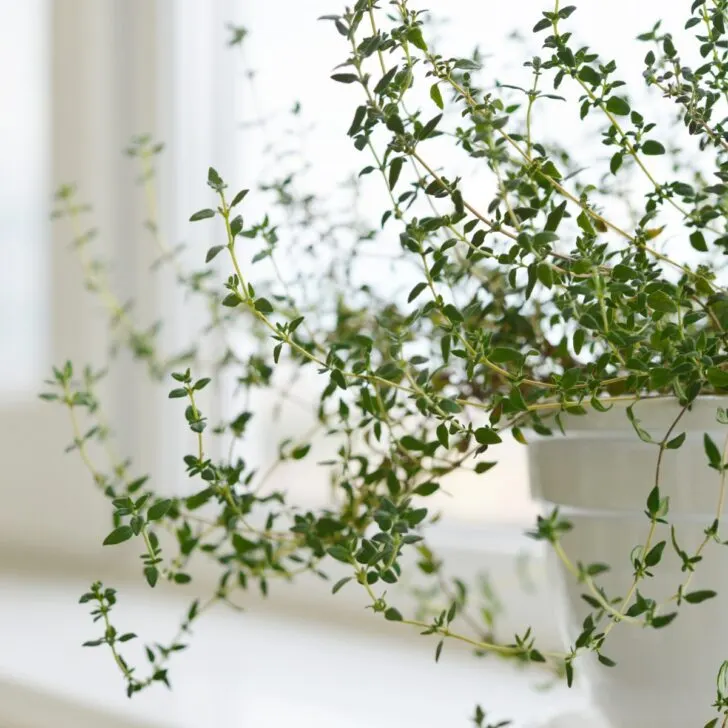Check out this step-by-step guide to growing mint from seed, from soil prep to watering tips to harvesting their fragrant leaves!
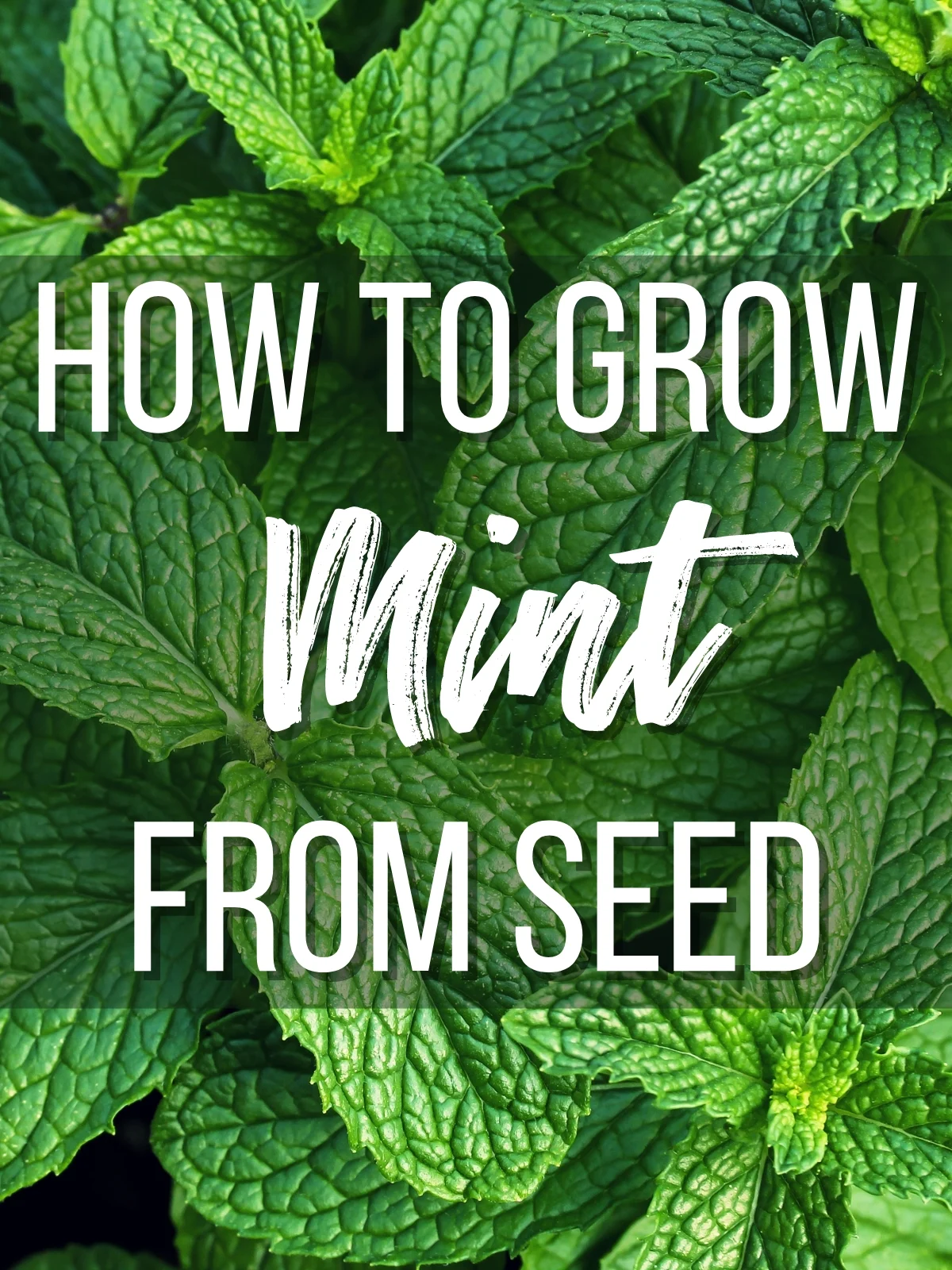
Want a never-ending supply of mint for tea, cooking or cocktails? Mint multiplies quickly, and a little plant might take over your garden if you're not careful.
But don't let that stop you! To prevent this plant from getting out of control, consider growing it in containers or out-of-the-way areas where it can spread without harm.
Instead of buying a full grown mint plant at the garden center, why not try growing mint from seed? You can find many more varieties than just the standard peppermint or spearmint, and it'll cost just a few bucks per packet!
Let's get growing!
This post contains affiliate links for your convenience. Purchases made through these links may earn me a small commission at no additional cost to you.
Mint Varieties
You may think that all mints are the same, but they each have their own unique flavor! Some are best for desserts, while others are great for tea or cocktails. Here are some of the most popular varieties:
- 'Spearmint' is the classic mint variety, known for its sweet and mild flavor. It's a favorite for culinary uses and is often the go-to for dishes and drinks.
- 'Peppermint' is a bit more pungent than spearmint, with a strong, cool aftertaste. It's great for teas and is the primary mint used in candies.
- 'Mojito Mint' is the Cuban mint from which the famous cocktail gets its name. Despite its Caribbean origins, it's hardy down to zone 6.
- 'Corsican Mint' is a low-growing type forming dense mats tolerant of light foot traffic, making it an excellent option for planting between pavers and stepping stones.
- 'Chocolate Mint' has dark green leaves with a mildly chocolate odor but a flavor with hints of orange that mix well in desserts and drinks.
How to Grow Mint
Mint is relatively hardy, but small plants can be sensitive to freezing weather. Therefore, start seeds or cuttings indoors about ten weeks before the average last frost date for your area.
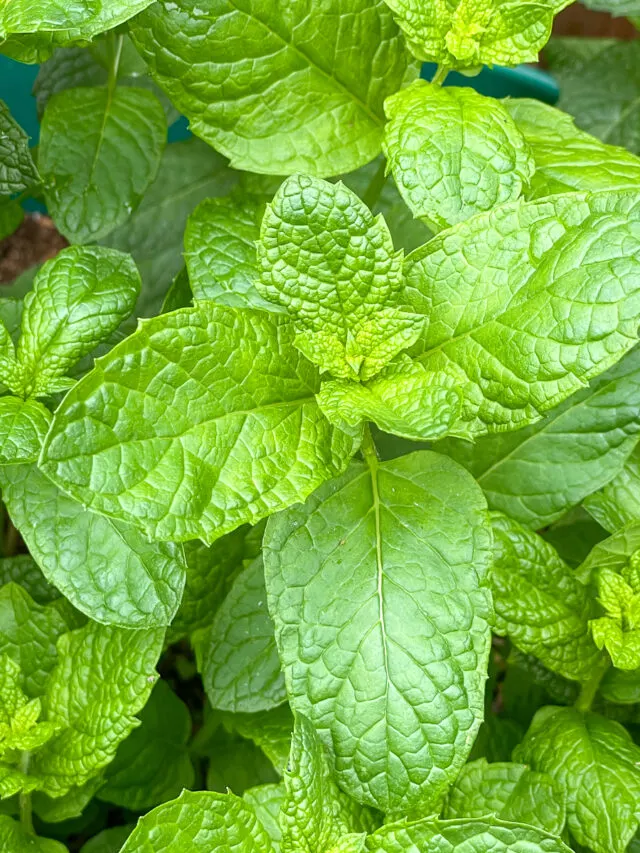
How to Plant Mint Seeds
Seeds are tiny, so scatter them lightly on a tray filled with damp, sterile seed starting soil mix. Press the seeds lightly into the soil surface but do not cover them.
Mint seeds need light to germinate. Keep the tray on a sunny window sill or under grow lights until the seeds germinate in about two weeks.
Keep the soil moist until the seedlings emerge. A humidity dome can help trap moisture in the tray, so it doesn't dry out too quickly.
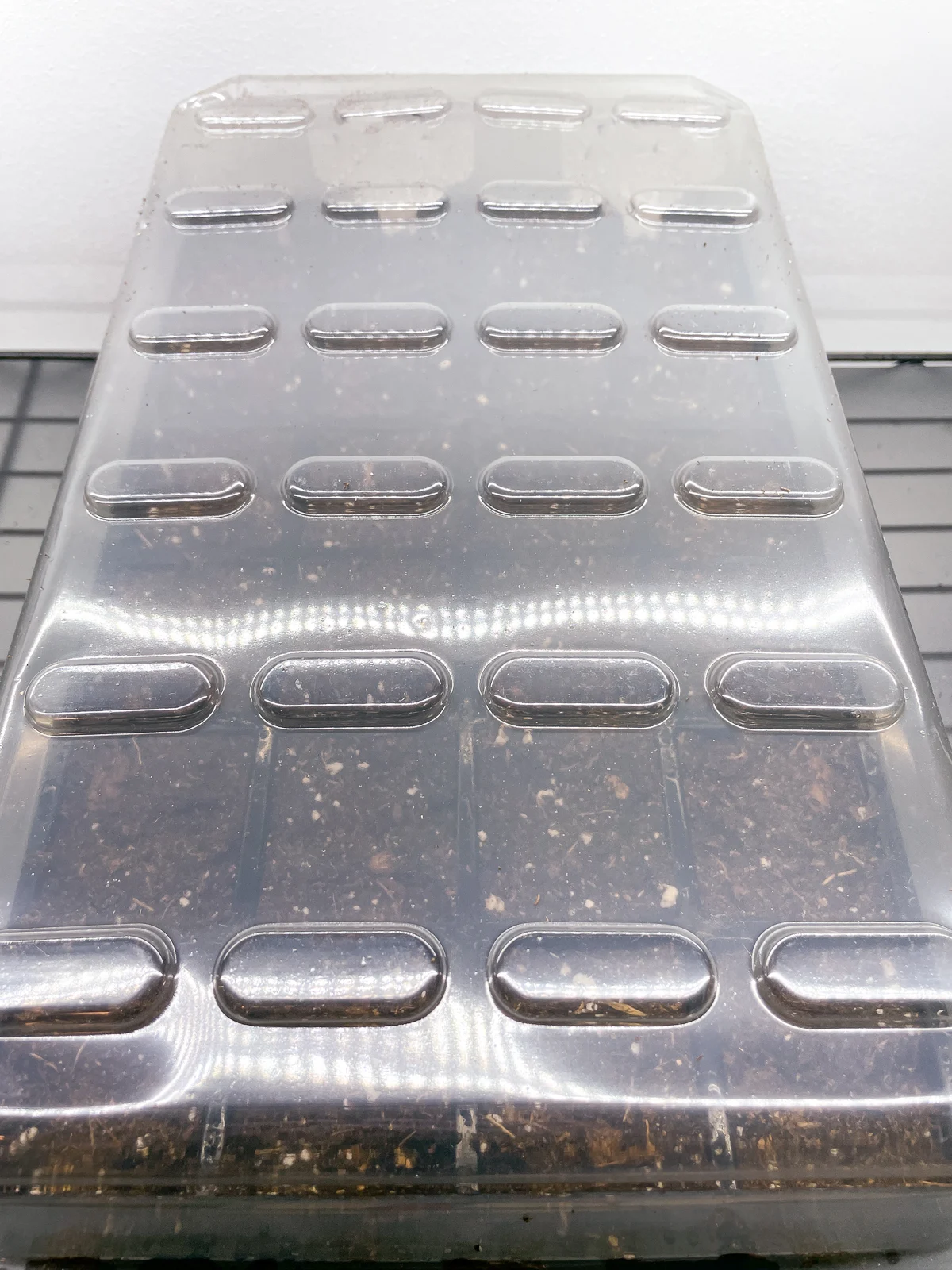
When the mint seedlings are about 2 inches tall, you may need to thin them out to allow the strongest ones more room to grow. Cut out smaller and weaker plants instead of yanking them out, which can disturb the delicate roots of the ones you want to keep!
When two true leaves appear, you can transplant the seedlings into 4-inch pots. Once all danger of frost has passed, you can move them outside to harden them off before planting in their final location.

Growing Mint from Cuttings
Mint roots quickly from a healthy tip snipped from a growing plant. Many types of mint are only propagated from cuttings, including peppermint.

- Remove the leaves from the bottom third of a 4 to 6-inch cutting.
- Place the stripped end of the cutting into a glass of water.
- Keep the glass on a sunny window sill until roots develop.
- Alternately, you can plant the bare end of the cuttings directly into 4-inch pots filled with sterile seed starting mix.
- Transplant the cuttings into permanent locations when they have several sets of true leaves.
Planting Mint in the Garden
Transplant mint outdoors once the weather warms up in your area because frost can damage young seedlings. However, mature plants can tolerate temperatures down to 20°F. In addition, some types die back to the roots in winter, allowing them to survive lower temperatures.
Mint plants tolerate partial shade, although they need at least four hours of direct sunlight to grow well. Mint thrives in many soil types, as long as it is not waterlogged. If you're planting it in a container (which is highly recommended), use well-draining potting soil.
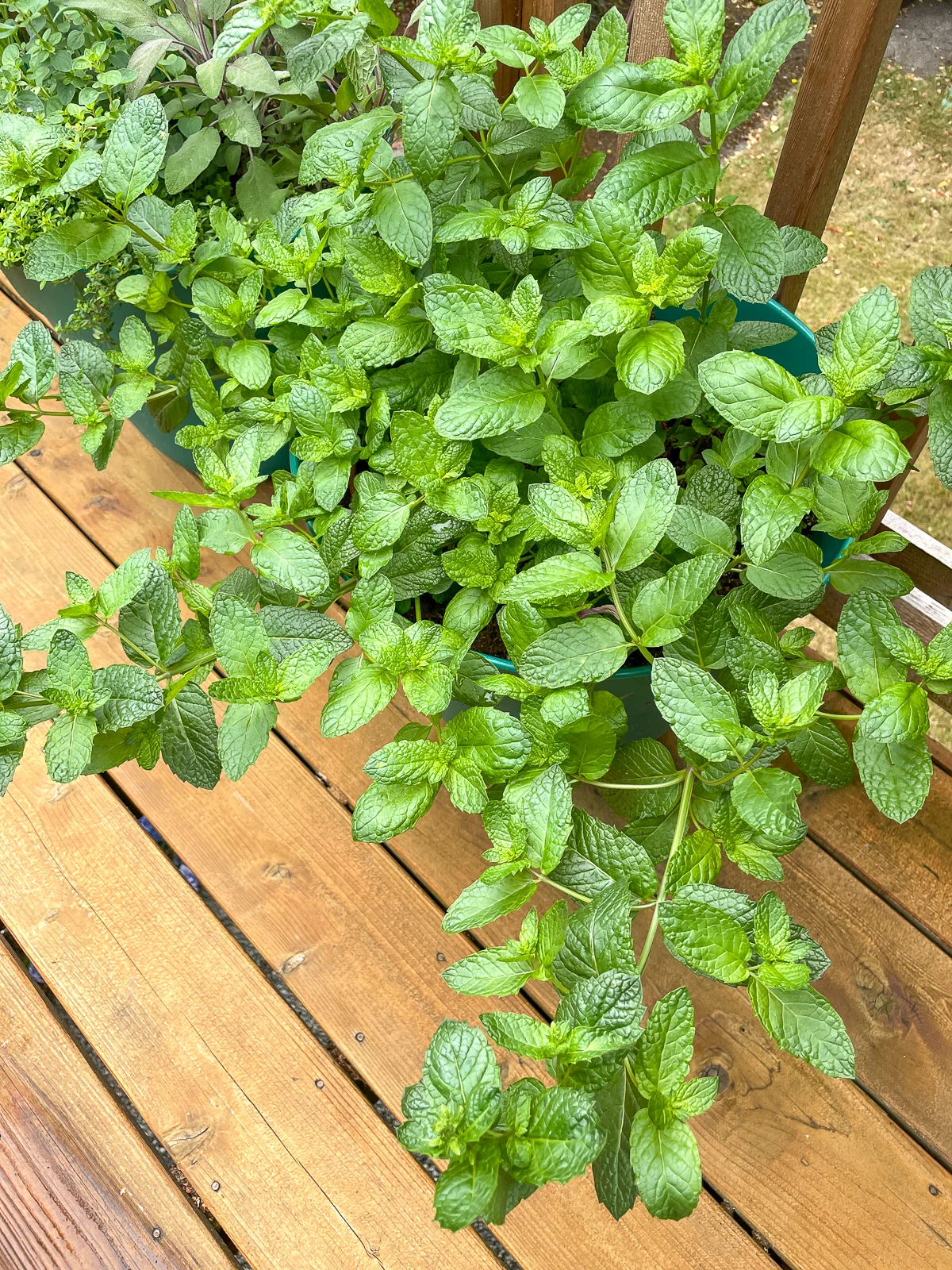
Caring for Mint
Mint prefers consistently moist soil. It doesn't like to be waterlogged, but it also doesn't appreciate drying out completely. Container-grown plants need more frequent watering than those growing in the ground. Consider adding drip irrigation with a timer to provide consistent water.
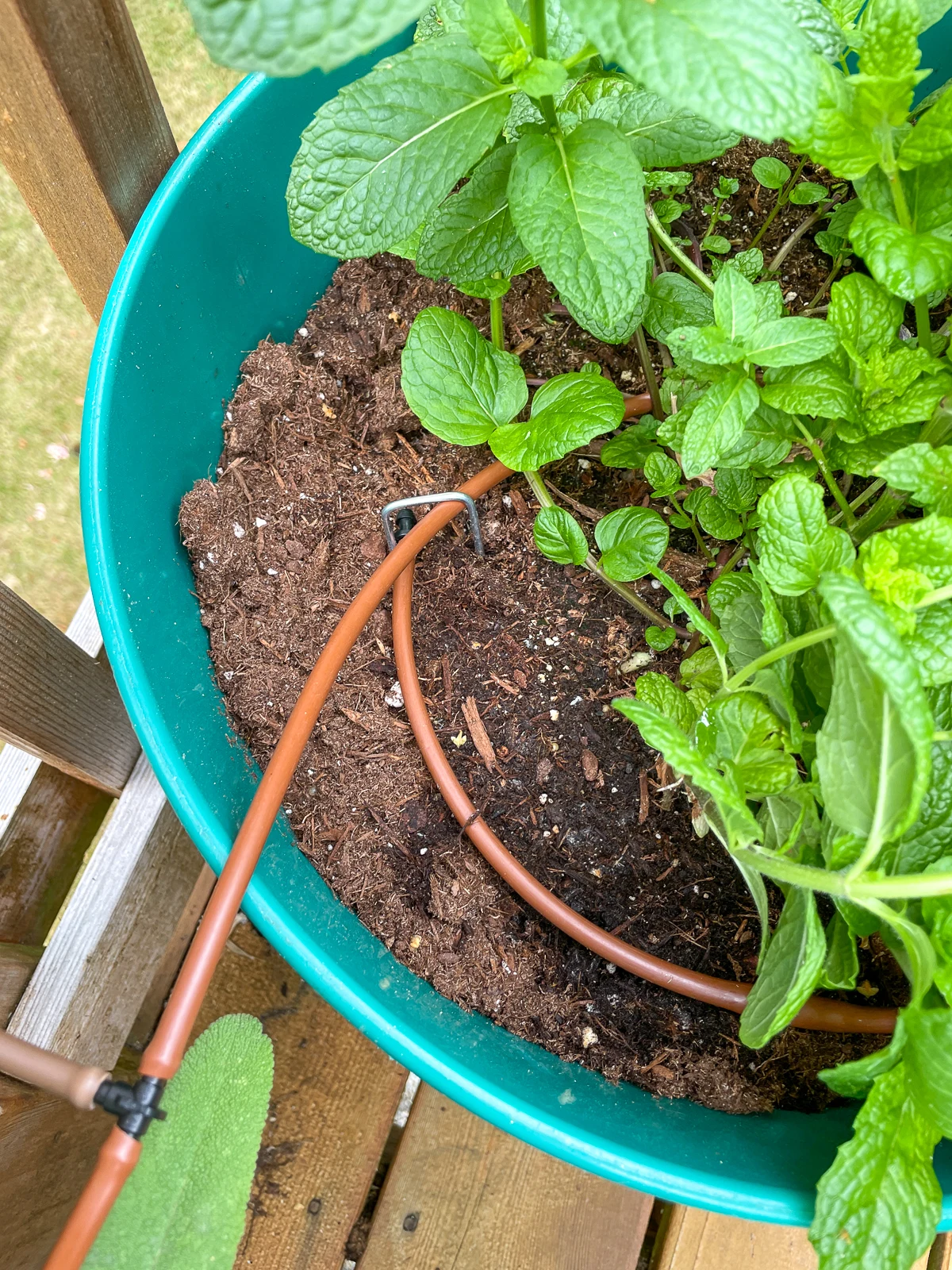
You can harvest from plants whenever they are actively growing. Pluck a few mint leaves individually or cut entire stems at the bottom to use fresh or dry.

You can store fresh branches in a glass of water in the refrigerator for a week or more. Dry mint for about a week in small bundles in an area with good ventilation and out of direct light. Store dry mint in tightly closed glass jars or freeze in jars or plastic bags.
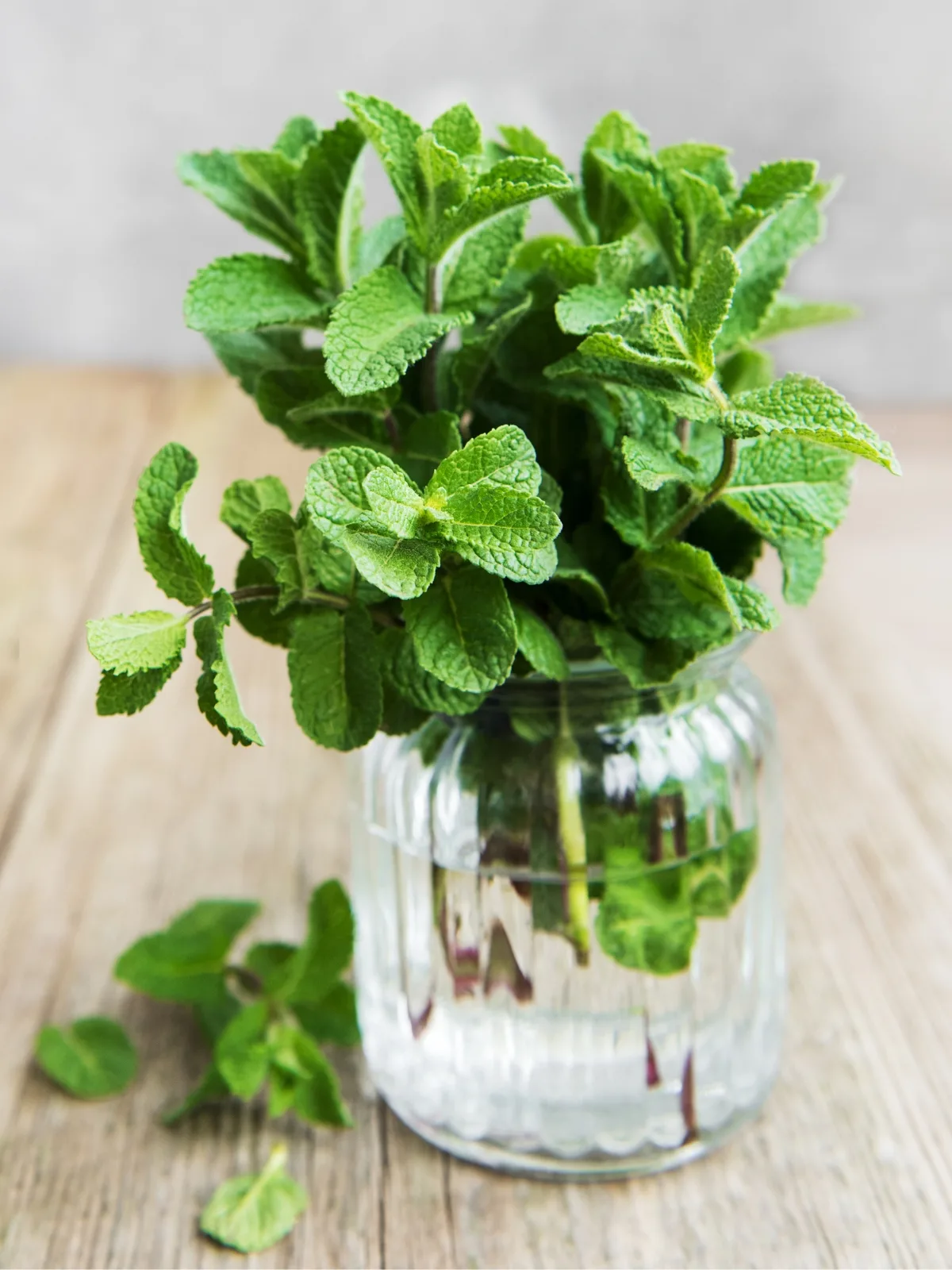
Mint plants have a better flavor when started new from cuttings or roots every two or three years. However, be cautious about dumping soil from containers where you grew mint before because small root fragments can easily take hold and start growing where you don't want them!
Check out these other herb growing guides!


